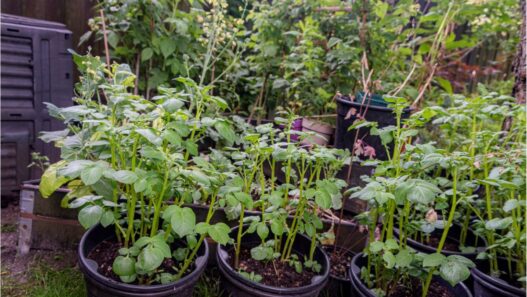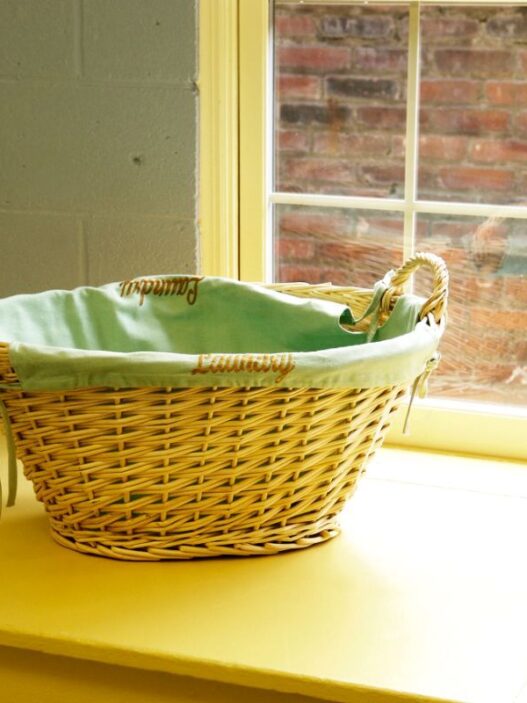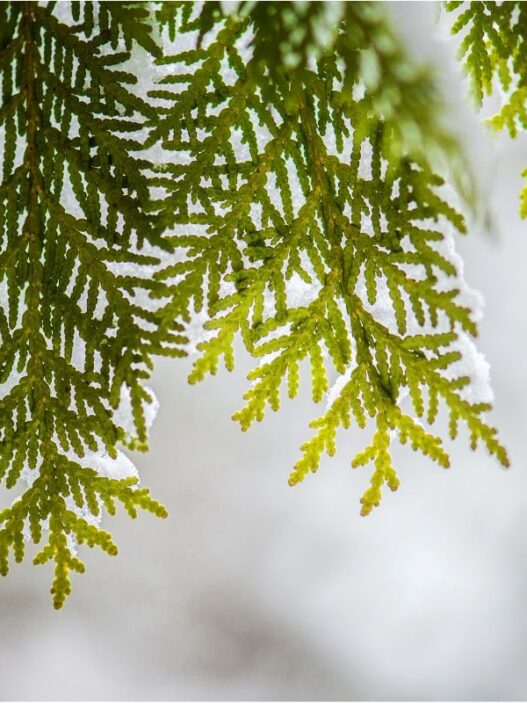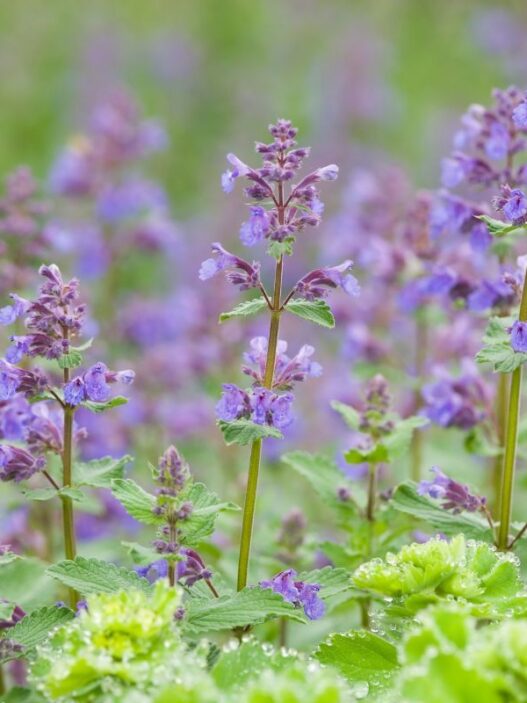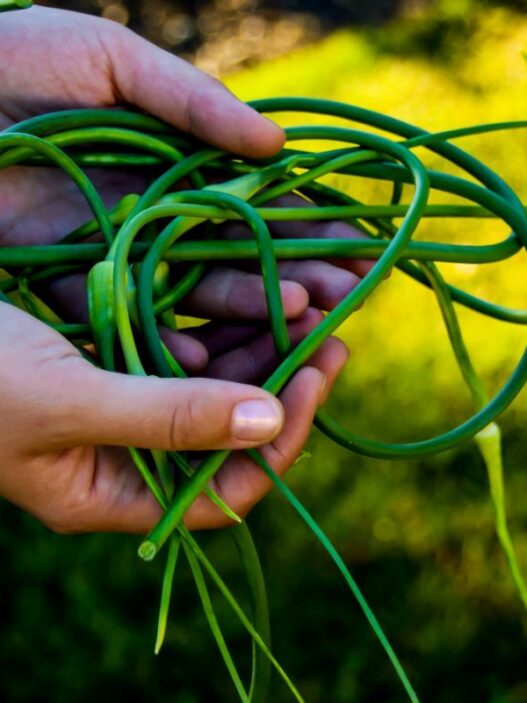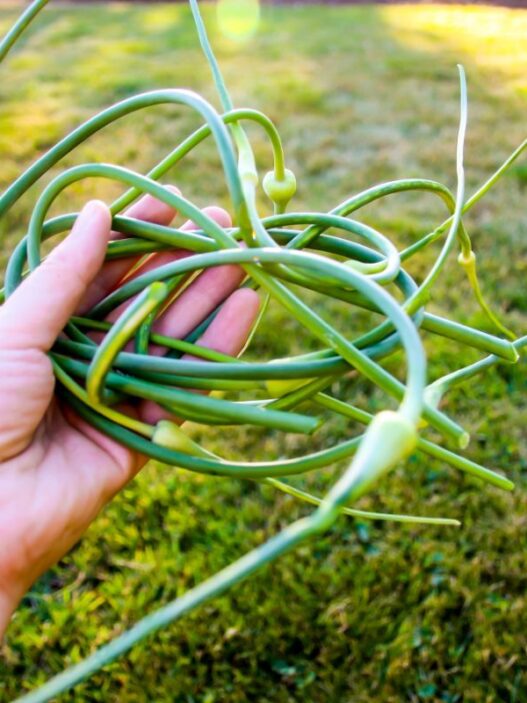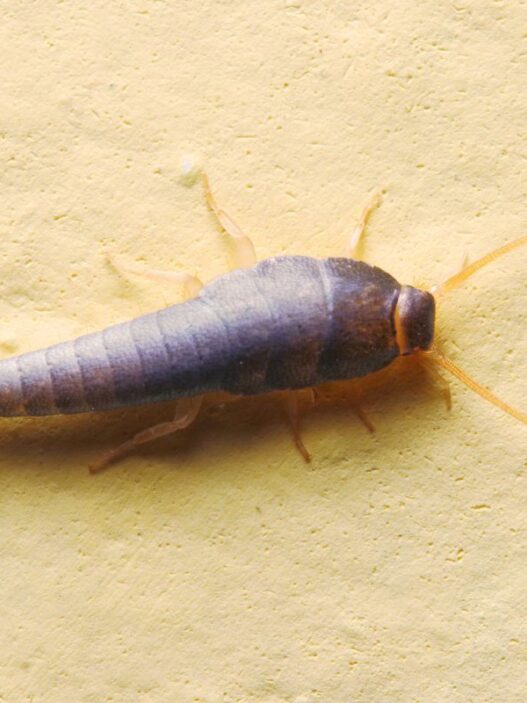I’ve been growing potatoes in containers for years and enjoy fresh spuds all year round. Sounds easy?
Well, like any gardening endeavor, no it’s not! There are some problems you might encounter while growing potatoes in containers. These pitfalls can ruin your harvest and even discourage you from trying again.
Over the years, I’ve faced these 9 problems while growing potatoes in containers, namely:
- Fungi attack rots away the potato roots
- Excessive water absorption results in Edema on potato leaves
- The container’s soil dries out faster
- The potato plant becomes nutrient deficient
- Early Blight light fungus forms on the leaves
- Problems maintaining the quality of the soil
- The limited space in the containers produces a smaller yield
- Plants get destroyed due to pests invasion
- Trouble maintaining the right temperature and sunlight exposure balance
Below, I’ll explain:
- these 9 problems you might face while growing potatoes in containers
- and I’ll give you some tips and tricks to help you enjoy a bountiful harvest of homegrown spuds
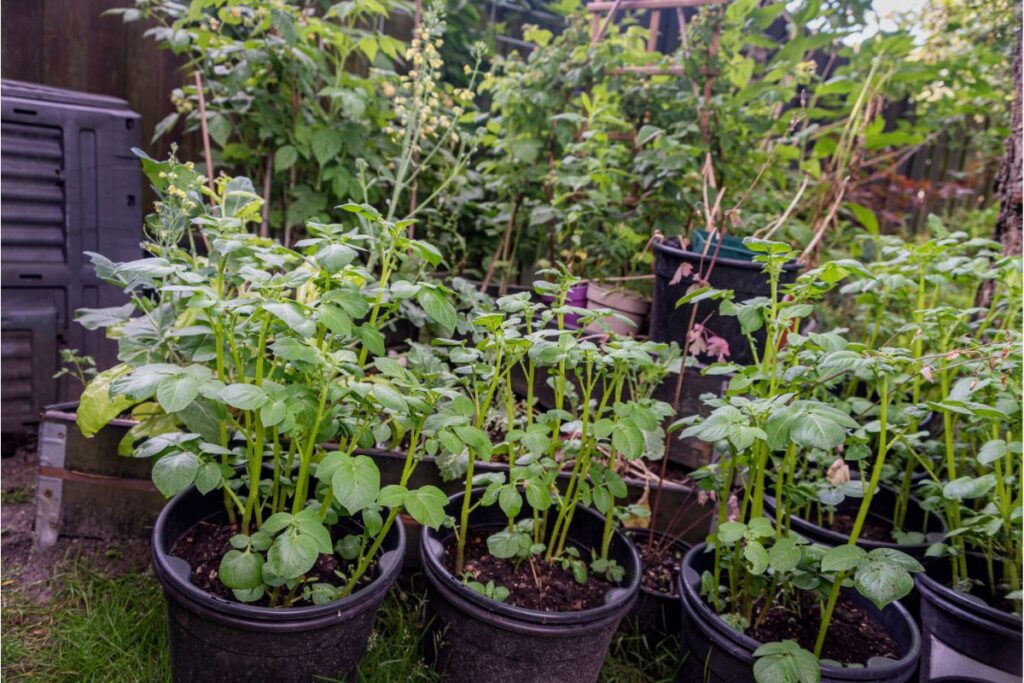
What Might Go Wrong When Planting Potatoes In Containers?
Root rotting due to fungal attack, edema on leaves caused by humidity or excessive watering, and the blight light disease on the spuds are some significant problems related to growing potatoes in containers.
But fret not, my gardening buddies! With a bit of know-how and a positive can-do attitude, you can get rid of these hurdles in no time.
Let’s dig deep to uncover these 9 problems of growing potatoes in containers and explore solutions for each of them to ensure a successful spuds harvest.
Problem 1: Root Rot
Ah, root rot – the nemesis of many gardeners and, unfortunately, a big problem when growing potatoes in containers. This issue arises when the roots on your spuds plant get infected with fungi because of excessive moisture in the soil.
The fungus attack on the potato plants results in wilted leaves, early leaf drop, poor growth, and few or no potatoes in the container, eventually cutting the plant’s life short.

But don’t throw in your trowel just yet! The preventive measures below can help you quickly ward off this fungal foe:
- Make adequate drainage holes in the container to allow excess water to escape quickly.
- Use well-draining soil or add organic matter, such as compost, for planting potatoes in the container.
- Avoid over-watering your potato plants.
- Check the moisture level of water in the soil regularly.
Problem 2: Edema Formation
Edema is another common issue affecting your beloved plants growing in the container. While strolling into your flourishing indoor potato garden, you may sometimes find bumps on the plant leaves or stems.
This condition is called Edema or Oedema, which occurs when the root of your potato plants absorb more water than the leaves can release through transpiration, resulting in water rupturing the cells, and the appearance of water-soaked patches on the leaves.
It’s like eating too many snacks at once and feeling bloated.
Edema in potato plants is caused by various factors, such as:
- Excessive watering.
- High humidity.
- Poor air circulation in the greenhouse or your indoor potato garden.
- Sudden temperature changes.
To cure edema in your potato plants or prevent it from occurring in the first place, take these steps:
- Improve airflow around your potato plants.
- Use a dehumidifier indoors to regulate the humidity level around the containers.
- Avoid exposing your potato plants to sudden temperature changes.
- Ensure the soil drains and removes moisture easily.
Problem 3: Soil Dries Out Quickly
Although container gardening is a convenient and space-saving method to get home-based potatoes, there is one more problem you need to be mindful of, and that’s watering.
Yes, containers have a bit of a thirst, and the soil can dry out faster than the ground, just like that friend who gobbles up your snacks before you even say, “Potato chips!”
This means you need to be more diligent and find the perfect balance to keep the soil moist without overdoing it. How?
Let me spill the beans or, in this case, those potatoes! Start with regular watering and keep a watchful eye on the containers, and keep them from getting dry for too long.
Give your potatoes a drink whenever the top inch of soil feels dry. If you are too forgetful or busy, buy yourself a moisture meter to get the right balance.
Problem 4: Nutrient Deficiency
Just like you require a balanced diet to stay healthy, potatoes also need certain nutrients from the soil to thrive. But sometimes, the essential elements become depleted in the container.
Therefore, potato plants suffer from nutrient deficiency, leading to:
- Stunted growth
- Poor tuber development
- Crinkled leaflets
- Yellow leaves.
It’s like the plants are telling you they need a nutrient boost!
To avoid nutrient deficiency problems while growing potatoes in containers, use a nutrient-rich potting mix or add some compost to the soil. Slow-release fertilizers formulated explicitly for spuds can also help you replenish essential elements over time.
Problem 5: Early Blight Light Disease
Let’s come to another dire problem which is a potential menace for growing potatoes in containers.
While working on your spuds to grow, you may notice the leaves turning yellow, with dark brown or black spots appearing and spreading quickly. The early blight light disease is the main culprit behind this issue.
A fungal pathogen, Alternaria solani, cause the disease, affecting potato plants’ tubers, stems, and leaves.
While this pesky disease can be pretty frustrating, you can quickly control it with these tips:
- Use nitrogen and phosphorus fertilizers to avoid their deficiency in the soil.
- Opt for a late-harvest variety that can withstand early blight better.
- Remove and destroy all affected plants and tubers as soon as you notice the symptoms.
- Keep sufficient space between the seedlings while planting.
- Provide good air circulation in the greenhouse.
- Spray your potato crops with fungicide.
- Plant disease-free seedlings.
Problem 6: Compromised Soil Quality
The potato crop’s health and productivity depend mainly on the soil quality you choose for your containers.
The spuds grow well in slightly acidic to neutral environments, with 5.0 to 7.0 pH levels. So, check this essential factor using a pH testing meter and change the soil if needed.
But pH level isn’t the only aspect of soil quality to monitor while growing potatoes in containers. The spuds thrive well in loose, sandy soil, allowing the roots to breathe and expand quickly.
To ensure optimal soil quality, use a potting mixture as suggested above or create your own blend by combining equal parts of garden soil, perlite or vermiculite, and compost.
Problem 7: Less Yield
If you regularly plant potatoes in your outdoor garden, you know how tempting it is to sow as many seedlings as possible. After all, who doesn’t love an abundant harvest?
But here is the scoop! Since containers have limited space, too many tubers might still grow, but you may get a smaller bounty. This happens when the plants engage in an intense struggle to have their share of nutrients, water, and sunlight.
So, to truly unlock your potato-growing magic potential, give your spuds a bit of breathing room.
Space them carefully in the container to let the plants stretch their leaves and roots. Doing this will allow them to bask in the sunshine, get proper nutrients and have more access to water.
Problem 8: Pests Invasion On Plants
Even though containers can protect your potatoes from some pests and diseases, they are not totally immune.
When you eagerly await to harvest the spuds, these pesky invaders, such as aphids, potato beetles, and slugs, have other plans in mind. They munch on your potato leaves and affect their growth.
Start by inspecting the leaves regularly and checking for any sign of infestation. If you find any affected part, remove it ASAP.
To employ a natural pest control method, handpick and remove the beetles and slugs or spray insecticidal soap or neem oil on the potato plants to deter the aphids.
Problem 9: Poor Temperature Control and Sunlight Balance
Getting the right balance of temperature and sunlight can be like finding a sweet spot on a seesaw when growing potatoes in containers.
Potatoes grow best in slightly cool and sunny conditions, with temperatures between 65 and 80° F during the day and 55 to 65 at night.
They also need at least 6 hours of sunlight daily but a bit too much is harmful in harsh and scorching climates. The potatoes in the containers only grow well if these conditions are appropriately balanced.
Therefore, get creative by using reflective materials in the indoor garden or even investing in artificial grow lights to supplement the sunlight your potatoes need. Besides this, choose a large container to hold enough soil to insulate the plant roots from extreme heat or cold.
